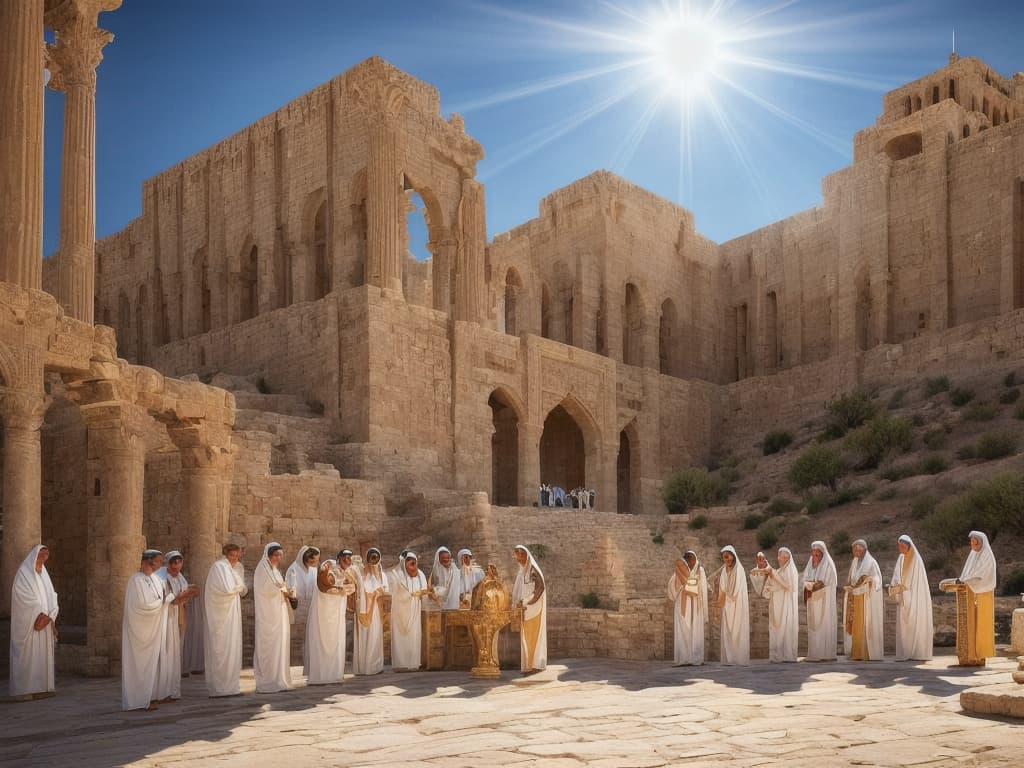- The Avesta and the Memory of Asha — Shadows Preserved in the Sacred Text
- The Life of Zarathustra and His Bond with Asha
- The Age of King So-qi and the City of Oas
- A Divine Plan and the Birth of Zarathustra
- Encounter with the Divine — The Infant Zarathustra Speaks
- Tochet’s Escape and Asha’s Resolve
- Zarathustra’s Mission and Reunion with Asha
- Compilation of the Holy Texts and the Missionary Journey
- The Final Journey and Death
- Asha’s Legacy and Traces of Alteration in the Avesta
- Zarathustra’s Testament and Traces of the Original Avesta
- References、Images Used
The Avesta and the Memory of Asha — Shadows Preserved in the Sacred Text
The Life of Zarathustra and His Bond with Asha
The Book of God’s Word, the 20th book of OAHSPE, contains what can be described as a biography of Zarathustra, the founder of Zoroastrianism. It details his intense 40-year life journey.
Throughout his life, from birth to death, a central figure who accompanied him was Asha. To understand their relationship, one must first trace Zarathustra’s life.
The Age of King So-qi and the City of Oas
Zarathustra was born in the great city of Oas in ancient Parsis (later Persia). Around 7700 BCE, Oas was a city-state governing multiple regions under the authoritarian rule of King So-qi.
So-qi was a warlike king who executed prisoners of war and displayed their bodies on the city walls as a show of power. Troubled by this, the god I’hua’Mazda vowed to bring destruction to all kingdoms of the Parsis.
A Divine Plan and the Birth of Zarathustra
I’hua’Mazda initiated a generational process of interbreeding between the I’hin and I’huan peoples to produce a holy child—Zarathustra.
His mother, Tochet, was known as a “Sui” (a hearer of the divine voice), and believed she had conceived through divine will. She told others as much, which soon reached the ears of King So-qi. He commanded his son-in-law Asha to investigate the matter.
Encounter with the Divine — The Infant Zarathustra Speaks
When Asha visited Tochet, the nursing infant suddenly spoke—not with a human voice, but through the spirit of I’hua’Mazda:
“I am I’hua’Mazda. The child’s lips are not moving—I am speaking. This child has no gender. He is I’esu, one without passion.”
Though initially skeptical, Asha came to believe through divine revelation and reported to King So-qi. This was his first encounter with Zarathustra.
Tochet’s Escape and Asha’s Resolve
King So-qi ordered the arrest of Tochet and her child. However, warned by divine guidance, they fled to the “Goat Forest.” In a rage, the king ordered the massacre of all infants in Oas, including his own grandson.
The only one who objected was Asha. He offered himself to be executed instead, begging the king to rescind the command. Though the king delayed the execution, public outrage escalated into revolt. The king and his council were killed, and the people declared Asha their new ruler.
Zarathustra’s Mission and Reunion with Asha
Zarathustra, now grown in the Goat Forest, learned from I’hua’Mazda of the suffering in the world and received a divine mission to end war. He returned to Oas and reunited with Asha, now king.
Asha was astonished to see the young man who had once been the infant he met. Upon hearing the divine mission, Asha recalled the words spoken long ago and pledged his support.
Compilation of the Holy Texts and the Missionary Journey
Zarathustra returned to the forest and began compiling the world’s first sacred text with I’hua’Mazda. The effort took over a decade. During this time, King Asha grew anxious, but upon receiving the completed book, he joyfully spread its teachings and abdicated his throne to follow Zarathustra.
Zarathustra then traveled across the land preaching peace, facing resistance and threats from local rulers. Despite divine assistance, his path was filled with internal conflict.
The Final Journey and Death
His mission culminated in a return to Oas. The heavens were preparing for his return, and his death was foretold.
After sharing a final meal with Asha, he entered the city and was captured. Asha, spared as a former friend, witnessed Zarathustra’s execution. Public fury led to the death of King Ponyah.
Asha’s Legacy and Traces of Alteration in the Avesta
Asha remained with Zarathustra from cradle to grave.
In today’s Avesta, the deity “Asha Vahishta” appears frequently. Scholars argue this reflects modifications introduced when Ahura Mazda declared himself as the Creator, altering the original texts written by Zarathustra and I’hua’Mazda.
Originally, the Avesta consisted of three figures:
- The Creator Ormazd (a full divine personality)
- The god I’hua’Mazda (god of the I’huans)
- The saint Zarathustra
The Creator, embodying both good and evil, required the balancing influence of a divine council, leading to the creation of the Divan (a system of collective governance among gods).
The “Amesha Spentas” of later Avesta were modeled by Ahura Mazda to mirror this divine council.
Understanding this historical and spiritual background is essential when interpreting the current version of the Avesta.

Zarathustra’s Testament and Traces of the Original Avesta
Ahura Mazda and the Amesha Spentas
In the current Zoroastrian scripture, the Avesta, Ahura Mazda is regarded as the supreme deity, with a group of divine entities called the Amesha Spentas serving under him.
Among them, Asha (righteous order) and Vohu Manah (good thought) are often seen as complementary or parallel divine attributes. They are typically mentioned together without implying superiority of one over the other.
An Unnatural Line – Yasna 33.14
However, in Yasna 33.14, we find a peculiar passage:
“Zarathushtra offers even his own life as a gift—
The excellence of good thought, speech, and action,
Obedience and ruling power—
To Mazda and Asha.”
What stands out here is that although “good thought” is clearly mentioned, the god associated with it—Vohu Manah—is nowhere to be seen. Instead, the offering is made only to Mazda and Asha, which seems quite out of place contextually.
Structure and Theme of Yasna 33
Yasna 33 is generally structured as follows:
| Verses | Summary |
|---|---|
| 1–4 | Description of the righteous man and his stewardship of the land, expelling evil |
| 5–13 | Reasons and significance of offering to the gods |
| 14 | Zarathustra offering his life to Mazda and Asha |
The chapter centers around the righteous individual walking the path of truth with the help of the Amesha Spentas. Yet, verse 14 breaks the flow with an unusual context and tone.
Zarathustra’s Testament and the “True Recipients”
Verse 14 can be interpreted as Zarathustra’s final testament. It closely resembles the scene before his last sermon in his homeland, Oas, during the “Last Supper” shared in the Forest of Goats with his companions.
At this point, he had accepted that he would not return. The archangel Fragapatti had already descended to Earth to guide his spirit to the heavens after death (Oahspe, Book of Fragapatti, Chapter 41). Zarathustra’s death was thus imminent and known to him.
Who Were the Real Recipients of His Life?
Considering this, the phrase “I offer my life to Mazda and Asha” may not refer to Ahura Mazda and Asha as depicted in the current Avesta. Rather, it may indicate two concrete beings: I’hua’Mazda, the god he followed, and Asha, the loyal disciple and close companion who stood by him from birth to death.
Asha was the one who accompanied Zarathustra through every phase of his life. It would be fitting, then, for Zarathustra to name him when offering his life.
Traces of the Original – Signs of Redaction

When viewed this way, Yasna 33.14 appears to be at odds with the current teachings of Zoroastrianism. Instead, it may be a preserved fragment from the original scripture, reflecting the thoughts of Zarathustra and I’hua’Mazda, rather than Ahura Mazda’s doctrine.
Reading the modern Avesta requires careful attention to such remnants of the original, as they offer deep insights into the historical and spiritual layers behind the text.
References、Images Used
| books | authors | publishers |
|---|---|---|
| OAHSPE ”A New Bible in the Worlds of Jehofih and His angel embassadors.” | John B. Newbrough | OAHSPE PUBLISHING ASSOCIATION |
| 原典完訳アヴェスタ ゾロアスター教の聖典 | 訳:野田恵剛 | 国書刊行会 |
Images:Generated by stable diffusion (model: epicRealism)

コメント